Rare Rides Icons: The History of Imperial, More Than Just a Car (Part V)

Our history of the Imperial series continues today, as Part V coincides with the dawn of the Fifties. Imperial wasn’t in the best place after its long-lived fourth-generation model was parted by the cruel reality of World War II.
But Chrysler was determined to launch the Imperial of the Fifties in a big way, with more body style availability, the return of two wheelbases, and new technology.
The Imperial was all-new for 1949 and saw the start of a two-pronged model approach in its fifth generation. Not all cars deserved the vaunted Crown Imperial name: Entry-level Imperials, as they were, wore Imperial by itself. Newly available (again) was an exclusive long-wheelbase version, the most expensive vehicle produced by Chrysler. Previously it might have been called a Custom CW, but in ’49 it wore the name Imperial Crown.
Imperial’s styling was modernized over its predecessor, with a much more Fifties-appropriate visage. Front fenders were very smooth and lacked bullet or pontoon-type sheet metal. Rear fenders still retained their distinction, as was the fashion for most of the 1950s decade. The overall look was simpler and less heavy-handed with regard to character lines and the use of chrome. It was all conservative, a characteristic which would only sporadically be applied to Imperial from that point forward.
Standard length Imperials rode on a 131.5-inch wheelbase, and body styles were limited to signify its entry-level existence. All short-wheelbase Imperials had four doors and held six passengers at the model’s introduction. The Imperial was in essence a very nice version of the Chrysler New Yorker and was closely related to the Windsor, Saratoga, and Town & Country. Exterior trim was the same as New Yorker (aside from badges) but the Imperial was identified via its coach roof and an upscale interior design that included leather and broadcloth materials. One selling point on Imperial’s trim over the New Yorker was its coachbuilt nature: Installation was performed by Derham in Detroit. It was one of the company’s final activities as it headed toward closure later in the decade.
Imperial Crown customers enjoyed luxurious length via the 144.5-inch wheelbase their cars used and had body style options. The Crown always carried eight passengers and was sold as a sedan or limousine. The main differentiator there was a retractable divider window, as the limousine was intended as a chauffeured vehicle. The earliest 1949 model year Imperial Crowns were not actually new, however: They were 1948 cars that were leftover due to the car’s slow sales. Chrysler got rid of those quickly and moved on to the real 1949 Imperial Crown by March of that year. Overall length for an Imperial in 1949 was 210 inches, while an Imperial Crown was a much more impressive 234.8 inches.
The fifth-generation Imperial brought with it some technical advances over its predecessor, namely to the transmission and braking systems. Two different transmissions were offered in this generation, a four-speed semi-automatic called Presto-Matic, and later a two-speed PowerFlite standard automatic. Gone were the days of shift-it-yourself luxury! Presto-Matic was the successor to the Vacamatic we discussed in our last entry. Available from 1946 to 1953, Presto-Matic’s main advancement over Vacamatic was the addition of an electric overdrive unit that operated on both Low and High gear sets. The overdrive effectively added another forward speed. The Presto-Matic name was only used on Chrysler vehicles, as there was different marketing for its usage across the company’s other brands. Imperial moved to PowerFlite’s two-speed auto in 1954, as Chrysler was the very last of the Detroit automakers to introduce a fully automatic transmission. GM beat them to the punch by 14 years, and Ford by three. Chrysler made up for the glacial pace by producing a very reliable transmission that had fewer parts than other automatics. A stout unit, it could handle power and weight from a low-level Plymouth up through the eight-cylinder of the Imperial.
Braking was handled via an all-new four-wheel disc system developed by Chrysler and Auto Specialties Manufacturing Company. When it was introduced in 1949 on the Imperial Crown, it became the first production car to feature disc brakes. The brakes didn’t use calipers but instead used twin discs that expanded to rub against the inside of the iron brake drum that also served as the housing. The brakes operated with less pressure than caliper brakes and were less prone to fade. The brakes were a very expensive system and were only included as a standard feature on Imperial Crown. They could be optioned on lesser Chrysler models for a not inconsiderable $400 ($4,300 adj.).
Imperials in 1949 were motivated by the old 324 cubic-inch (5.3L) Chrysler inline-eight, an engine that at its base dated back to 1930. With 135 horsepower, Chrysler phased out straight-eight usage entirely after the 1950 model year, as it had something new up its sleeve: A Hemi. Chrysler developed a Hemi engine for fighter aircraft in WWII and prepared (much smaller) versions for passenger car use starting in 1951. Offered in both inline-six and V8 varieties, Chrysler branded its first hemi-style engines as FirePower. Starting in 1951, Imperials used a V8 for the first time, which at 331 cubic inches (5.4L) was a slightly larger displacement than the prior year. Imperials offered the largest FirePower engine available and produced an impressive 180 horsepower. Power steering that Chrysler called Hydraglide also appeared in 1951, another industry first in a production car. It wasn’t cheap at $226 but was standard on the Imperial Crown. Hydraglide became standard on Imperial in 1952.
Though it had important technical changes over its life, Chrysler made smaller edits to Imperial’s visuals over the years. In 1950 grilles changed slightly to look more Cadillac-like, but in 1951, Chrysler made a very un-Cadillac move when it removed much of the chrome trim from the Imperial’s exterior. The conservative Imperial had less shiny chrome than the New Yorker upon which it was based.
1951 also heralded the arrival of more Imperial variety that was alluded to above. Two-door models appeared alongside the Imperial sedan, in the form of a coupe, hardtop, and convertible. The convertible proved very unpopular, with only 650 sales in its debut year. Chrysler dropped it immediately and persisted with its other two-door offerings. The Imperial Crown remained largely unchanged through this time, and its considerable expense kept it at a low-volume car. Just 338 were produced in 1951 and 1952 combined. The short wheelbase Imperial switched things up in 1953 when it was renamed Imperial Custom. Things continued much as they were before: Imperial Custom was essentially a New Yorker with a nicer interior and less garish exterior trim. However, there was a decorative eagle hood ornament for the first time – a symbol that became an Imperial staple.
Chrysler continued to add to the list of standard Imperial Custom equipment, and by 1953 front and rear armrests, a padded dash, and power windows and brakes were included. The windshield was one piece for the first time as of 1953. The Custom added to its range and reached upscale this year, as the Imperial Custom Limousine arrived with the all-important divider window. A new two-door variant joined the ranks in 1953, the hardtop Imperial Custom Newport. Incredibly expensive, the Custom Newport was $325 ($3,300 adj.) more expensive than the larger Imperial Custom eight-passenger sedan.
Also expensive was the Airtemp air conditioning. When it was offered on the Imperial in 1953, it was the first production car in over a decade to have air conditioning. Airtemp was an advanced system for its day and circulated cool air inside the cabin rather than just cooling it. The highest capacity air conditioner on any car at the time, it could cool an Imperial from 120 degrees to 85 degrees in two minutes. Cool air was directed toward the ceiling where it could comfortably fall on passengers, rather than blow directly on them. Imperial Crown received Airtemp as standard equipment in 1953.
Changes were limited for Imperial in 1954, as Chrysler wrapped up a rather short fifth-generation model. The company was about to unveil its much more prestigious plans for the name in 1955. We’ll talk about that in Part VI.
[Images: Chrysler]

Interested in lots of cars and their various historical contexts. Started writing articles for TTAC in late 2016, when my first posts were QOTDs. From there I started a few new series like Rare Rides, Buy/Drive/Burn, Abandoned History, and most recently Rare Rides Icons. Operating from a home base in Cincinnati, Ohio, a relative auto journalist dead zone. Many of my articles are prompted by something I'll see on social media that sparks my interest and causes me to research. Finding articles and information from the early days of the internet and beyond that covers the little details lost to time: trim packages, color and wheel choices, interior fabrics. Beyond those, I'm fascinated by automotive industry experiments, both failures and successes. Lately I've taken an interest in AI, and generating "what if" type images for car models long dead. Reincarnating a modern Toyota Paseo, Lincoln Mark IX, or Isuzu Trooper through a text prompt is fun. Fun to post them on Twitter too, and watch people overreact. To that end, the social media I use most is Twitter, @CoreyLewis86. I also contribute pieces for Forbes Wheels and Forbes Home.
More by Corey Lewis
Latest Car Reviews
Read moreLatest Product Reviews
Read moreRecent Comments
- Ajla IMO, something like this really should be naturally-aspirated.
- Kjhkjlhkjhkljh kljhjkhjklhkjh Unless they are solid state batteries you BAN THEM. I like EVs... but EVs like to burn ... for days
- Kjhkjlhkjhkljh kljhjkhjklhkjh uh .. it looks like a VW golf got the mumps
- Kjhkjlhkjhkljh kljhjkhjklhkjh I CANNOT WAIT FOR SOCIAL SECURITY TO GET GUTTED.. No i am really serious. I am insulated thanks to 24 years at Symantec then Broadcom .. tons of retirement cash. but all the blue hairs and low income trump voters are going to lose benefits and jobs and i get to laugh allllll dayyyyy long in about 2-3 years.. CANNOT WAIT, POPCORN READY.
- Kjhkjlhkjhkljh kljhjkhjklhkjh no. to many '''''americans'''' just want a CUV or SUV according to sales numbers



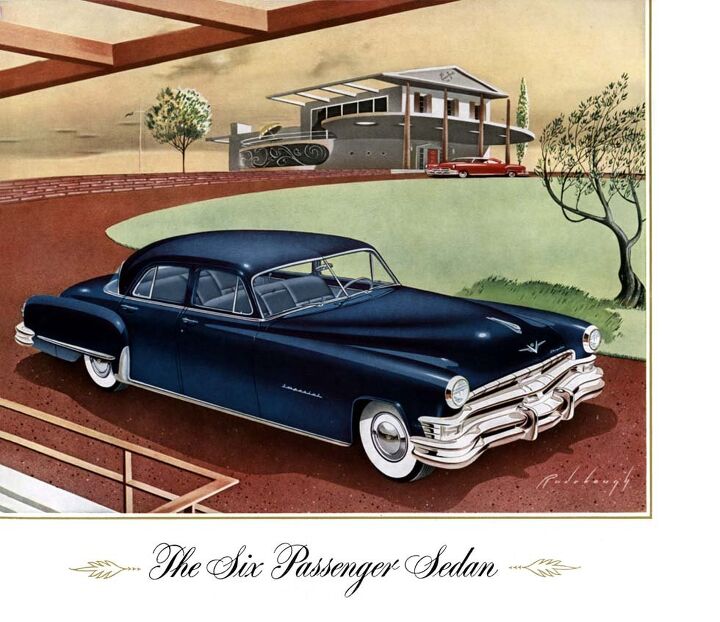























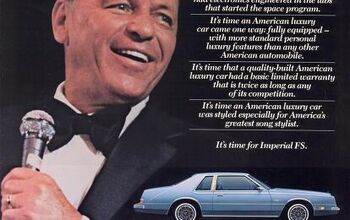
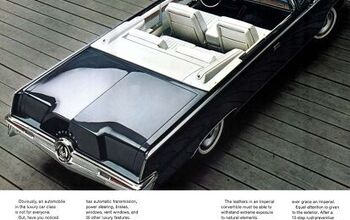
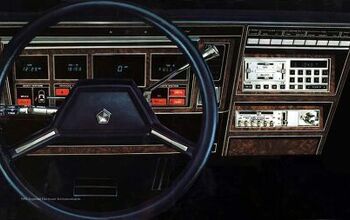
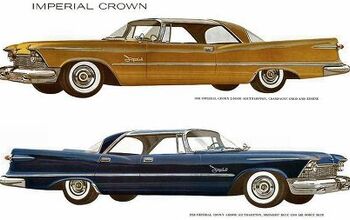
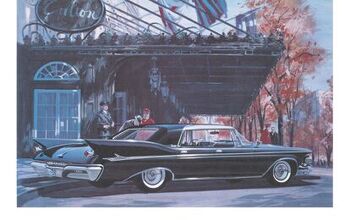







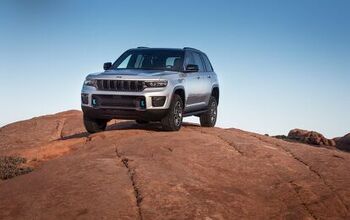


Comments
Join the conversation
The Chrysler IV 2220 WW2 aero engine was a single overhead cam per bank just like the RR Merlin, Daimler Benz DB600 series and the Allison, which all had four valves per cylinder. Chryler could only manage two valves per cylinder, gronk, and it was a fat heavy long upside down V16 configuration. It never made it anywhere, being entirely useless and unfit for purpose when it was sort of ready by the end of the war, because turbojets were the new rage and an RR Griffon would eat it for a snack. A "hemi" configuration was no advantage when the engine was going to be supercharged to within an inch of its life, and bulky heads making for a large frontal cross section were clunky. Who knows, maybe Chrysler engineering thought Rolls-Royce, Daimler and GM didn't have a clue about aero engines, when the opposite was actually the case. Chrysler did not make a hemi Firedome straight six in the late '40s or early '50s as implied here -- side valves were your lot if you didn't spring for the Firedome Hemi V8s. The most advanced engine in the world at the time? Geez, the Jag DOHC six had arrived the year before, but maybe nobody knew that at the Kokomo ad agency, even though every movie star and his dog bought an XK120 to be "seen" in, and shown doing so in LIFE magazine. These Imperials were curiosities that virtually nobody bought. Cadillac all the way compared to these frumpy old things! A girl in my HS class's Dad had a '50 Chrysler mini school bus ground pounder that couldn't get out of its own way with Fluid Drive or whatever they called it. It did last well, though, like most Chrysler products of that era, until the '57 rust buckets arrived. However, a nice series of articles on Imperial, which were near enough complete niche vehicles. Learned a few things. Interesting to read stuff by a young shaver who wasn't around in the '50s. Mmm, mmm, mmm, the interiors of most cars before about the '55s smelled like damp fur, musty. After which, the sweet smell of first gen carcinogenic vinyl replaced it, complementing that old-timey dry artificial rubber smell of the floor coverings in most cars. Not Imperial, though, where they sprang for carpets.
The timing is perfect for a this very rare '51 Imperial convertible for a very reasonable $50K https://classiccars.com/listings/view/1542852/1951-chrysler-imperial-for-sale-in-farmingdale-new-york-11735